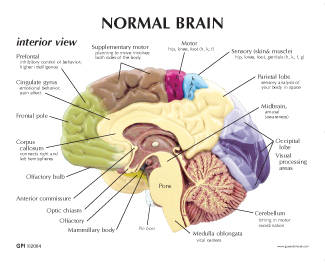Sensation and
Perception
- · Sensation- your window to the world
- · Perception- interpreting what comes in your window.
Sensation
- · The process by which our sensory receptors and nervous system receive stimulus from the environment
Bottom-Up Processing
- · Begins with the sense receptors and works up to the brain’s integration of sensory information
- · Thalamus
Top-Down Processing
- · Information processing guided by higher level mental processes
Absolute Threshold
- · The minimum stimulation needed to detect a stimulus 50% of the time
Difference
Threshold
- · The minimum difference that a person can detect between two stimuli
- · Also known as Just Noticeable Difference
Weber’s Law
- · The idea that, to perceive a difference between two stimuli, they must differ by a constant percentage; not a constant amount
Signal Detection
Theory
- · Predicts how we detect a stimulus amid another stimuli
Sensory Adaptation
- · Decreased responsiveness to stimuli due to constant stimulation
Selective Attention
- · The focusing of conscious awareness on a particular stimulus
·
Cocktail-party
Phenomenon
o
The ability to focus one’s listening attention
on a single talker among a mixture of conversations and background noises,
ignoring other conversations
Vision
- · Our most dominating sense
- · The height of a wave gives us its intensity (brightness)
- · The length of the wave gives us its hue (color)
- · The longer the way the more red
- · The shorter the wavelength the violet
- · Parts of the Eye:
Transduction
- · Transforming signals into neural impulses
- · Information goes from the senses to the thalamus, then to the various areas in the brain
- · Ex:
o
Light energy to vision
o
Chemical energy to smell and taste
o
Sound waves to sound
Color Vision
·
Young-Helmholtz
Trichromatic (three color
theory)
o
Three types of cones
§
Red
§
Blue
§
Green
o
These three types of cones can make millions of
combinations of colors
o
Most colorblind people simply lack cone receptor
cells for one or more of these primary colors.
·
Opponent Process Theory
o
The sensory receptors come in pairs
§
Red/Green
§
Yellow/Blue
§
Black/White
o
If one color is stimulated, the other is
inhibited
Hearing
- the height of the wave gives us the amplitude of the sound
- the frequency of the wave gives us the pitch of the sound
- Parts of the Ear:
Transduction in the
Ear
- 1. Sound waves hit the eardrum then anvil then hammer then stirrup then oval window
- 2. Everything is just vibrating
- 3. Then the cochlea vibrates
- 4. The cochlea is lined with mucus called basilar membrane
- 5. In basilar membrane there are hair cells
- 6. When hair cells vibrate they turn vibrations into neural impulses which are called organ of Corti
- 7. sent then to the thalamus up the auditory nerve
Pitch Theories of
Hearing
·
Place Theory
o
Different hairs vibrate in the cochlea when
there are different pitches
o
So some hairs vibrate when they hear high
pitches and other vibrate when they hear low pitches
·
Frequency
Theory
o
All the hairs vibrate at different speeds
Deafness
·
Conduction
Deafness
o
Something goes wrong with the sound and the
vibration on the way to the cochlea
o
You can replace the bones or get a hearing aid
to help
·
Nerve
(Sensorineural) Deafness
o
The Hair Cells in the cochlea get damaged
o
Loud noises can cause this type of deafness
o
NO WAY to replace the hairs
o
Cochlea implant is possible
Smell and Taste
- · SENSORY INTERACTION: the principle that one sense may influence another.
Taste
- · We have bumps on our tongue called papillae
- · Taste buds are located on the papillae (they are actually all over the mouth)
- · Sweet (tip of tongue), salty (front side of the tongue), sour (back of the tongue), bitter (base of the tongue), umami (where you have favorable taste that stays on your tongue)
Touch
- receptors located in our skin
- gate control theory of pain
- spinal cord contains a neurological gate that blocks pain signals or allows them to pass onto the brain
Vestibular Sense
- tells us where our body parts are
- receptors located in our muscles and joints
Perception
- the process of organizing and interpreting information, enabling us to recognize meaningful objects and events
Gestalt Philosophy
- the whole is greater than the sum of its parts
Figure Ground Relationship
- the organization of the visual field into objects (figures) that stand out from the surroundings (ground)
Grouping
- the perceptual tendency to organize stimuli into groups that we undersand
- Types
- Proximity
- Continuity
- Similarity
- Connectedness
Depth Perception
- the ability to see objects in three dimensions although the images that strike the retina are two dimensional
- allows us to judge distance
Binocular Cues
- Retinal disparity
- a binocular cue for seeing depth
- the closer an object comes to you, the greater the disparity
The Eye
The Ear
Sensation & Perception



